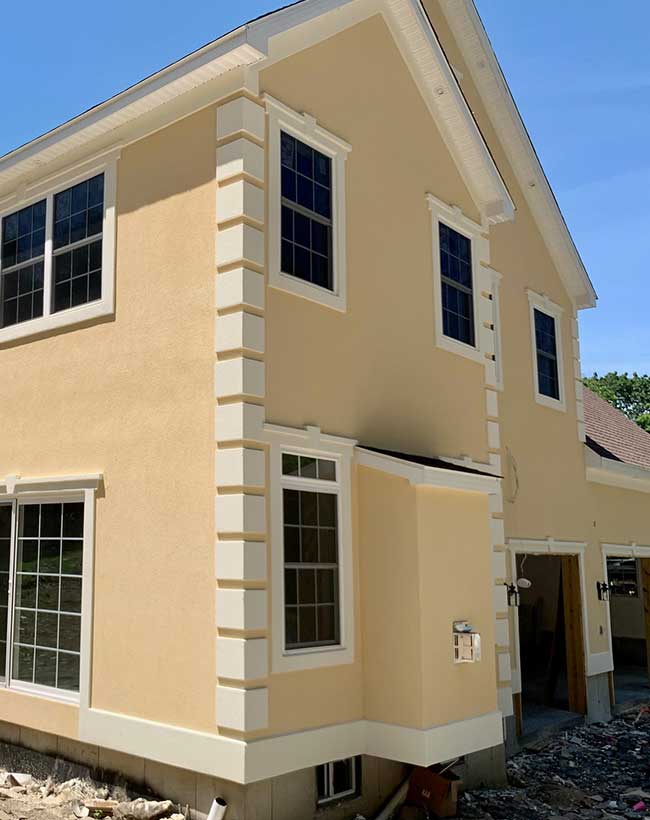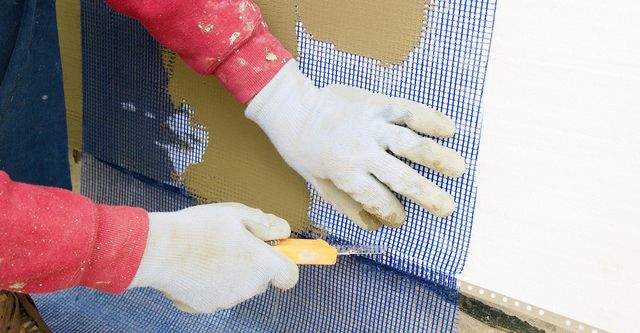The Ultimate Overview to Picking an Experienced Stucco Contractor for Your Needs
The Ultimate Overview to Picking an Experienced Stucco Contractor for Your Needs
Blog Article
Discovering the Versatility of Stucco in Modern Architecture
Stucco has long been identified for its aesthetic charm and flexibility, yet its role in modern-day architecture warrants a better examination. By exploring its cutting-edge applications, from striking facades to energy-efficient layouts, one can appreciate exactly how stucco is redefining the borders of architectural expression.
Historical Significance of Stucco
The historic importance of stucco is extensive, as it has played a critical function in architectural methods across numerous societies for centuries. Coming from in old worlds, stucco was utilized by the Egyptians and Greeks as a flexible and resilient finish for both interior and external surface areas. Its adaptability to different environments and capacity to mimic much more costly products made it a popular choice.
In the Roman era, stucco ended up being a main ornamental aspect, made use of thoroughly in public structures, villas, and holy places. The Romans refined the application techniques, enabling elaborate styles and relief sculptures. Throughout the Renaissance, stucco experienced a rebirth, particularly in Italy, where it was utilized in sophisticated exteriors and decorative information, showcasing the creativity of the duration.

Modern Applications in Design
Stucco has found restored significance in modern-day architecture because of its versatility and aesthetic allure (stucco contractor). This traditional material is significantly utilized in contemporary layout, bridging the void between modern-day and traditional aesthetic appeals. Designers and designers appreciate stucco for its versatility, permitting it to be used in numerous styles-- from minimal frameworks to clarify Mediterranean designs
In household jobs, stucco offers a clean, smooth surface that improves the visual communication of facades. Its ability to adapt various shapes and surface areas makes it an ideal selection for both new building and constructions and restoration jobs. Furthermore, stucco's toughness and low upkeep requirements add to its expanding popularity in metropolitan setups, where durable materials are vital.
Commercial applications have also embraced stucco, with many services going with this material to create welcoming and distinct store fronts. Making use of stucco in public structures, such as institutions and recreation center, showcases its possibility for developing visually appealing environments while providing excellent insulation homes.
Shade and Structure Advancements
Checking out color and texture advancements in stucco has opened up brand-new opportunities for developers and designers, enhancing the material's aesthetic impact in modern-day construction. Current advancements in pigment modern technology have enabled a bigger spectrum of shades, allowing designers to develop striking facades that incorporate effortlessly with their surroundings or stand out as vibrant building statements. This versatility in shade option supplies architects the ability to evoke specific emotional responses and balance with local aesthetic appeals.
Structure advancements have actually in a similar way changed stucco applications. Methods such as troweling, splashing, and marking have brought about varied surface area finishes, varying from smooth and improved to tough and responsive. These variants not just contribute to the structure's character but Homepage likewise play a vital duty in light interaction, boosting the visual depth and dimensionality of surface areas.
Additionally, the intro of artificial stucco alternatives has actually broadened design opportunities, using improved resilience and climate resistance while maintaining visual charm. As designers remain to experiment with innovative shade schemes and textured finishes, stucco stays a critical element in modern-day design, showcasing the material's versatility and ageless relevance in modern layout.
Sustainability and Energy Efficiency
Technologies in shade and appearance have not just enhanced the visual appeal of stucco however likewise led the way for greater emphasis on sustainability and power performance in modern design. As ecological concerns become significantly prominent, the building and construction sector is turning its attention to materials that add favorably to ecological balance.
Stucco, composed largely of natural products such as lime, cement, and sand, provides a sustainable choice to even more resource-intensive structure materials. Its durability and longevity reduce the need for frequent substitutes, thereby lessening waste and source intake gradually. Additionally, modern-day stucco formulas often consist of energy-efficient additives that boost insulation properties, reducing heating and air conditioning expenses for structures.
The reflective high qualities of stucco can additionally be crafted to mitigate warm absorption, adding to cooler indoor environments and much less dependence on synthetic climate control systems. By advertising power preservation and reducing the carbon impact of structures, stucco straightens with the principles of lasting style. As home builders and architects take on ingenious methods and eco-friendly techniques, stucco attracts attention as a liable and functional choice in contemporary design.

Case Studies of Stucco Projects
The flexibility of stucco as a building product is exhibited in various successful building jobs that highlight its practical and aesthetic advantages. One significant example is the renovation of the historical Casa de la Guerra in Santa dig this Barbara, California. The use of stucco not just protected the building's Spanish Colonial Resurgence official site style but additionally improved its sturdiness and weather resistance, ensuring durability while preserving architectural honesty.
One more compelling instance is the contemporary residential project, the Cactus Residence in Scottsdale, Arizona. stucco contractor. This striking home functions a smooth stucco finish that integrates with the surrounding desert landscape. The stucco's light shade shows warmth, adding to energy performance, while the distinctive surfaces include aesthetic interest
In Addition, the Kings Cross redevelopment in London showcases the versatility of stucco in urban setups. The application of stucco on modern mixed-use structures creates a cohesive visual that respects historic context while welcoming contemporary style concepts.
These study demonstrate exactly how stucco can offer numerous architectural functions, from conservation and energy effectiveness to visual enhancement, making it a flexible selection in modern design.
Final Thought
 In conclusion, stucco's historic significance and modern-day convenience make it a beneficial product in modern style. As shown via various case studies, stucco continues to play an essential function in shaping the building landscape of the modern-day period.
In conclusion, stucco's historic significance and modern-day convenience make it a beneficial product in modern style. As shown via various case studies, stucco continues to play an essential function in shaping the building landscape of the modern-day period.
In verdict, stucco's historical importance and contemporary convenience make it an important material in contemporary style.
Report this page